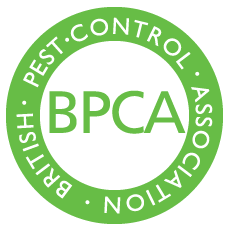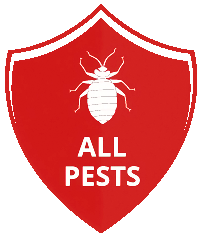RODENTS
Common Rodents and Vermin
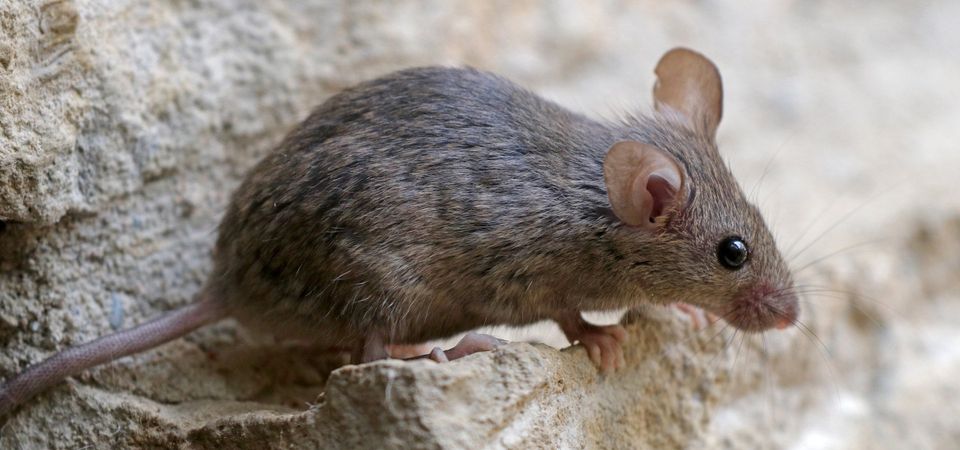
Mouse(Mus domesticus)
Appearance
The house mouse is the species most commonly found in buildings in the UK. These have a fur colour that varies from light brown to grey. The length of the body on a house mouse is typically between 60-90mm (2½" - 3½") and then the tail can be an extra 100mm (4"). Most often you will find the droppings, rather than the mouse itself. These are black, rod-shaped and 3-6mm (less than ¼" long.
Habitat
The house mouse is found in any type of urban and most kinds of rural buildings, although they do spent the summer months living outside. Mice build nests to liv ein, usually for house mice these are built inside houses, particularly in winter months. Nests are built anywhere that is secluded from sight and had access to a food source. Spaces under floorboards or kitchen units are popular, although so are lofts especially if they are well insulated. The nests are mostly built out of fibrous materials, such as cloth, wool and paper.
Mice can chew through plaster walls and enlarge existing holes in wood to give themselves easier access between nests and food sources. A mouse hole is usually no bigger than 30mm (1¼") across. A fully grown house mouse can even squeeze itself through a crack as small as 5mm (less than ¼"). Mice are nocturnal for the most part and can often be heard scrabbling about in their search for food.
Food
The favourite food of the house mouse is cereals (corn, wheat, etc not Frosties), but the fact of the matter is that mice will eat almost anything. This is where much of the physical damage that mice cause occurs, when they gnaw and rip their way into packets. If evidence of mice is found in food then it must be disposed of, mice will contaminate food and can carry illness. Mice can even gnaw through wood in order to get to food.
What makes mice pests that need to be controlled?
Mice, like all rodents, need to be controlled as they carry disease and can cause damage to property.
Mice, like many other rodents, have little control over their bladder and bowels. Which means that as they move around your kitchen and over your food they contaminate the food and work surfaces.
The house mouse can carry a range of diseases that are hazardous or even potentially fatal to humans and pets. Diseased mice can pass on infections through urine and excrement. The diseases that mice can carry include typhus, trichinosis, lyme disease, and Leptospirosis (Weil's disease).
They can and do cause damage to property, particularly by gnawing. This is especially dangerous if they start gnawing through electrical cables.
Signs of an infestation
The first sign of the presence of mice will be droppings, although you may spot footprints across dust or other markable surfices and occasionally burrows in soft ground surrounding the property. Other indications can include signs of gnawing, especially in food packaging and fabrics.

Mole(Talpa europaea)
Moles are native to Britain and surprisingly common. Especially areas of permanent grassland like lawns, golf courses, public parks and playing fields. They have an exceptionally well developed sense hearing (despite having no external earflap), as well as a very good sense of touch.
Appearance
Moles are vaguely cylindrical, 12 (4½") - 16 (5") cm from nose to tail and can weigh from 70g (2½oz) to 110g (4oz)
Moles are solitary animals and inhabit their own tunnel system. These tunnel systems can cover as much as 2000 m². These tunnels act as a trap for the mole's food, such as worms. The mole will patrol these tunnels regularly searching for their food.
It is immediately after sunrise and before sunset that moles are most active, the rest of the time they rest in a special chamber in their tunnels. The breeding season for molesruns from from late winter to early summer every year. A new litter of young moles will leave their nest when they are around five weeks old.
Damage
Damage caused by moles isn't limited to those who pride themselves on the pristine condition of their lawn. Moles cause damage to the roots of seedlings and plants, often killing them. Not to mention that mole hills can become trip hazards, as well as causing damage to lawn mowers and other turfcare machinery.
Although moles can create over 20 m (65ft) of new tunnels each day, they don't cause subsidence any more than leaving an uneven surface if the tunnels collapse, not enough to damage properties.
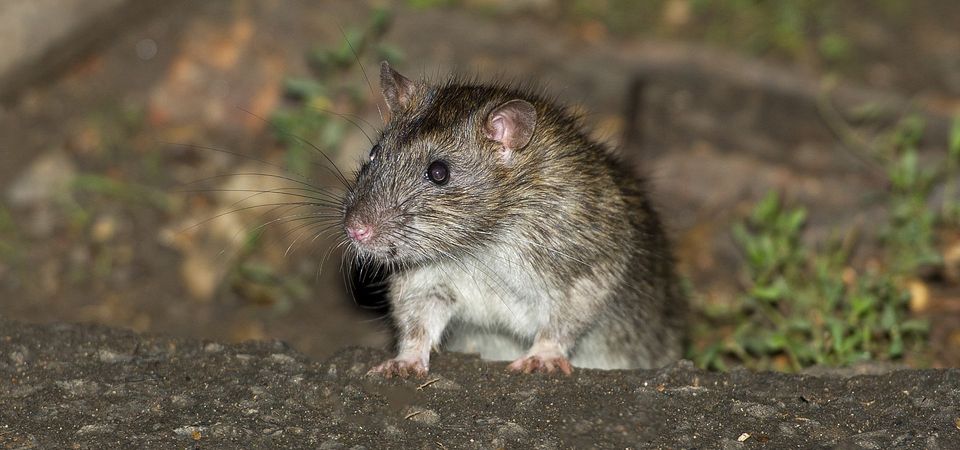
Rats(Rattus norvegicus)
Appearance
The common rat (also known as the Norway or brown rat) usually has fur of mid to dark brown across its back, with grey fur on its belly. But colours can range anywhere from white to black. Adult rats are usually 200 (8") - 270mm (10") plus a tail which can be another 200mm (8").
The black rat (also known as the ship rat) is rare in Britain now, but occasionally seen. They are smaller than common rats and normally wholy black, except its large hairless ears. The tail of the black rat accounts for more than half of its entire length.
Habitat
The common rat is renowned for its adaptability to new environments. They can (and do) live in almost any environment that supports humans. A rat will be quite happy in any location that gives it access to food, water and shelter. This means that rats can be found in almost any urban or rural area.
They can make their home in yours, they prefer lofts, wall cavities or under floorboards, if you have a cellar then they will find this ideal. They can also set up shop in your garden. Burrowing into compost heaps and under sheds, or making tunnels in grassy banks. Common rats are commonly found using sewer systems both as a home and means of getting around, breaches in waste drains can be a way in for rats.
Black rats are have excellent climbing ability. They are usually found indoors, especially living in roof spaces.
Signs of an infestation?
- you may spot live or dead rats
- droppings are usually an early sign of the presence of rats. Rat droppings are 12mm in length and tapered to each end
- rat runs – both ship and common rats will follow set routes to and from sources of foot which can be identified
- footprints and the marks from the rat's tails can be seen in soft, pliant surfaces or through dust and dirt
- burrows – the entrance hole of a rat burrow will be 70mm (2½") to 120mm (5") across and be seen in grassy banks or under tree roots. They can also be seen at the edge of paving or drain cover surrounds
- nests are made of fibres, especially fabric and paper that has been gnawed. Sometimes these nests can be found indoors, especially in lofts or under floorboards
- gnawing – rats from teeth are always growing and because of this they gnaw all the time. So signs of them will become more and more apparent over time, on wood, plastic and even brick or cement.
- rats transmit many diseases to humans, including Salmonella (food poisoning) and Weil's disease, historically rats are famous for having carried the fleas which transmitted bubonic plague, wiping out a large percentage of the population of Europe.
- Rats contaminate food making it unfit for human consumption. Estimates indicate that as much as 5% of the food produced across the world is lost because of rodent contamination.
- damage can be caused to structures and buildings through the rats incessant gnawing, not just cosmetic damage, but signficant damage to electrical cabling, which can lead to fire.
Food
Like mice, rats prefer cereal products but will eat almost any foos, including resorting to cannibalism. Much of the damage a rat will cause is due to gnawing and ripping to get to food. Rats also contaminate food with their urine and droppings.
What makes rats a pest that needs to be controlled
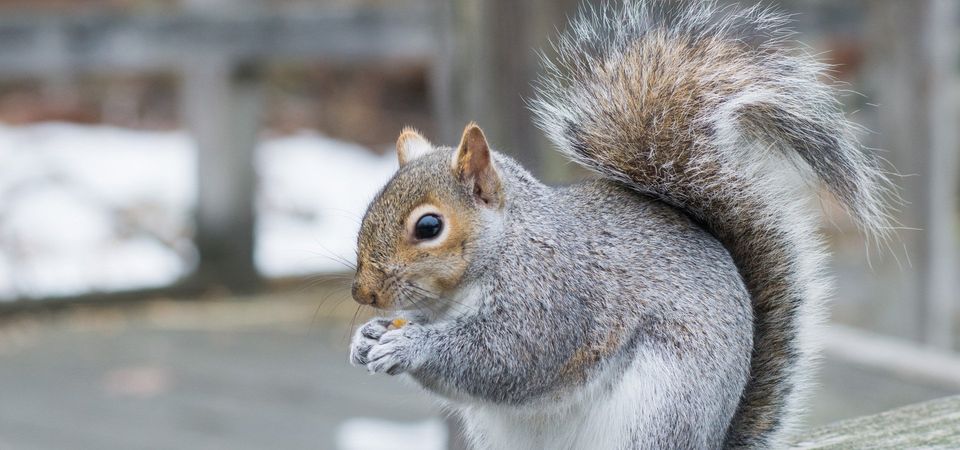
Grey SquirrelsSciuris carolinensis
Appearance
250mm (10") to 26.5mm (12½"), plus 220mm (11") of tail, and up to 0.5kg (1lb) when fully grown. The fur is grey and squirrels have a distinctively large bushy tail
Breeding season for squirrels runs through the end of winter and occasionally again in early summer. Each pair of squirrels can produce as many as three litters in a year with as many as seven young per litter. Each young squirrel reaches sexual maturity at ten to twelve months of age.
Habitat
Squirrels are very common in the UK and usually make their home in woodland, particularly where there are deciduous trees in abundance, although they are happy to make their home in parks and large gardens.
A squirrel nest is called a drey and will be compact and spherical, 300mm (11") to 600mm (22") across. The external structure will be mostly twigs and dry leaves, with grass inside.
Squirrels famously eat acorns, although they also feed on any other kind of nut, tree shoots, flowers, fruit, roots and cereal. The eat at ground level and bury spare food for the winter.
Grey squirrels can make their nests in lofts or wall cavities as well as in trees. They can cause damage to both homes and trees by gnawing at the bark. This leaves the tree open to infection.
Grey squirrels are classed as an invading species, which have driven out the native red squirrel down to a few remaining enclaves. Because of this grey squirrels are not protected in the UK and the damage that they can cause has led them to be classed as pests.
CONTACT US
Thank you for contacting us.
We will get back to you as soon as possible
We will get back to you as soon as possible
Oops, there was an error sending your query.
Please try again later
All areas covered
All Locations
LIST
MAP
Find nearest location
- 0800 955 0148 Sidmouth, England, United Kingdom
- 0800 955 0148 Honiton, England, United Kingdom
- 0800 955 0148 Torquay, England, United Kingdom
- 0800 955 0148 Okehampton, England, United Kingdom
- 0800 955 0148 Tiverton, England, United Kingdom
- 0800 955 0148 Bideford, England, United Kingdom
- 0800 955 0148 Callington, England, United Kingdom
- 0800 955 0148 Launceston, PL15 7, Cornwall, England, United Kingdom
- 0800 955 0148 St Austell, England, United Kingdom
- 0800 955 0148 Wadebridge, England, United Kingdom
- 0800 955 0148 Bude, England, United Kingdom
- 0800 955 0148 Newquay, England, United Kingdom
- 0800 955 0148 Truro, England, United Kingdom
- 0800 955 0148 Barnstaple, United Kingdom
- 0800 955 0148 Penzance, England, United Kingdom
- 0800 955 0148 Dorchester, England, United Kingdom
- 0800 955 0148 Taunton, England, United Kingdom
© 2025. The content on this website is owned by us and our licensors. Do not copy any content (including images) without our consent.
